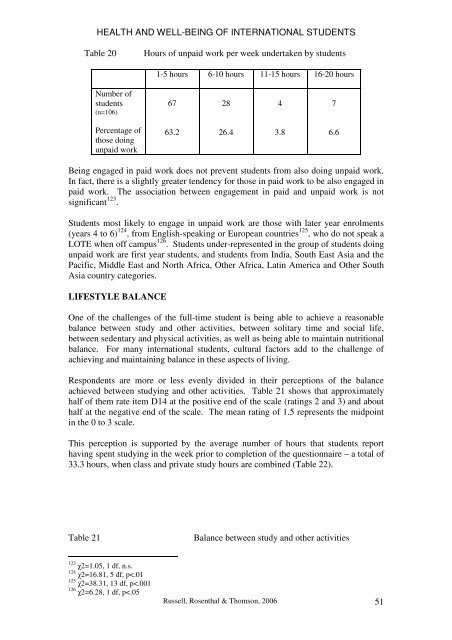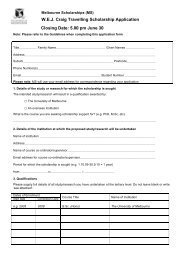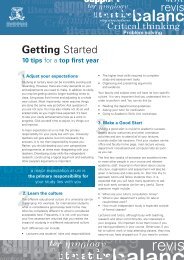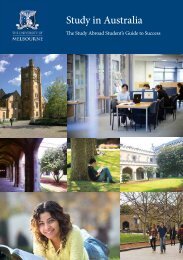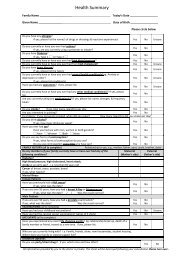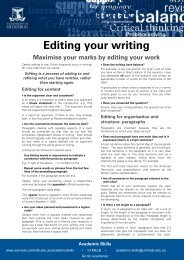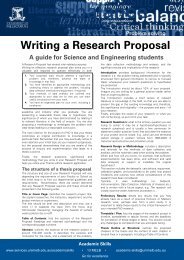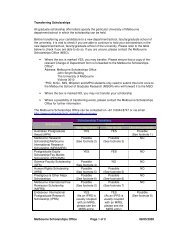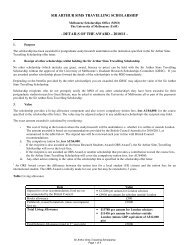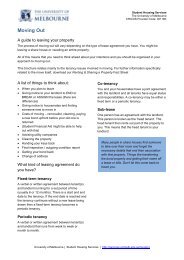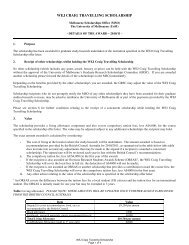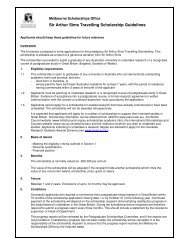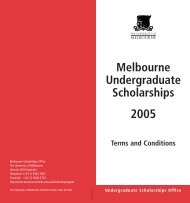a growing experience - Student Services - University of Melbourne
a growing experience - Student Services - University of Melbourne
a growing experience - Student Services - University of Melbourne
You also want an ePaper? Increase the reach of your titles
YUMPU automatically turns print PDFs into web optimized ePapers that Google loves.
HEALTH AND WELL-BEING OF INTERNATIONAL STUDENTSTable 20Hours <strong>of</strong> unpaid work per week undertaken by students1-5 hours 6-10 hours 11-15 hours 16-20 hoursNumber <strong>of</strong>students(n=106)672847Percentage <strong>of</strong>those doingunpaid work63.226.43.86.6Being engaged in paid work does not prevent students from also doing unpaid work.In fact, there is a slightly greater tendency for those in paid work to be also engaged inpaid work. The association between engagement in paid and unpaid work is notsignificant 123 .<strong>Student</strong>s most likely to engage in unpaid work are those with later year enrolments(years 4 to 6) 124 , from English-speaking or European countries 125 , who do not speak aLOTE when <strong>of</strong>f campus 126 . <strong>Student</strong>s under-represented in the group <strong>of</strong> students doingunpaid work are first year students, and students from India, South East Asia and thePacific, Middle East and North Africa, Other Africa, Latin America and Other SouthAsia country categories.LIFESTYLE BALANCEOne <strong>of</strong> the challenges <strong>of</strong> the full-time student is being able to achieve a reasonablebalance between study and other activities, between solitary time and social life,between sedentary and physical activities, as well as being able to maintain nutritionalbalance. For many international students, cultural factors add to the challenge <strong>of</strong>achieving and maintaining balance in these aspects <strong>of</strong> living.Respondents are more or less evenly divided in their perceptions <strong>of</strong> the balanceachieved between studying and other activities. Table 21 shows that approximatelyhalf <strong>of</strong> them rate item D14 at the positive end <strong>of</strong> the scale (ratings 2 and 3) and abouthalf at the negative end <strong>of</strong> the scale. The mean rating <strong>of</strong> 1.5 represents the midpointin the 0 to 3 scale.This perception is supported by the average number <strong>of</strong> hours that students reporthaving spent studying in the week prior to completion <strong>of</strong> the questionnaire – a total <strong>of</strong>33.3 hours, when class and private study hours are combined (Table 22).Table 21Balance between study and other activities123 2=1.05, 1 df, n.s.124 2=16.81, 5 df, p


